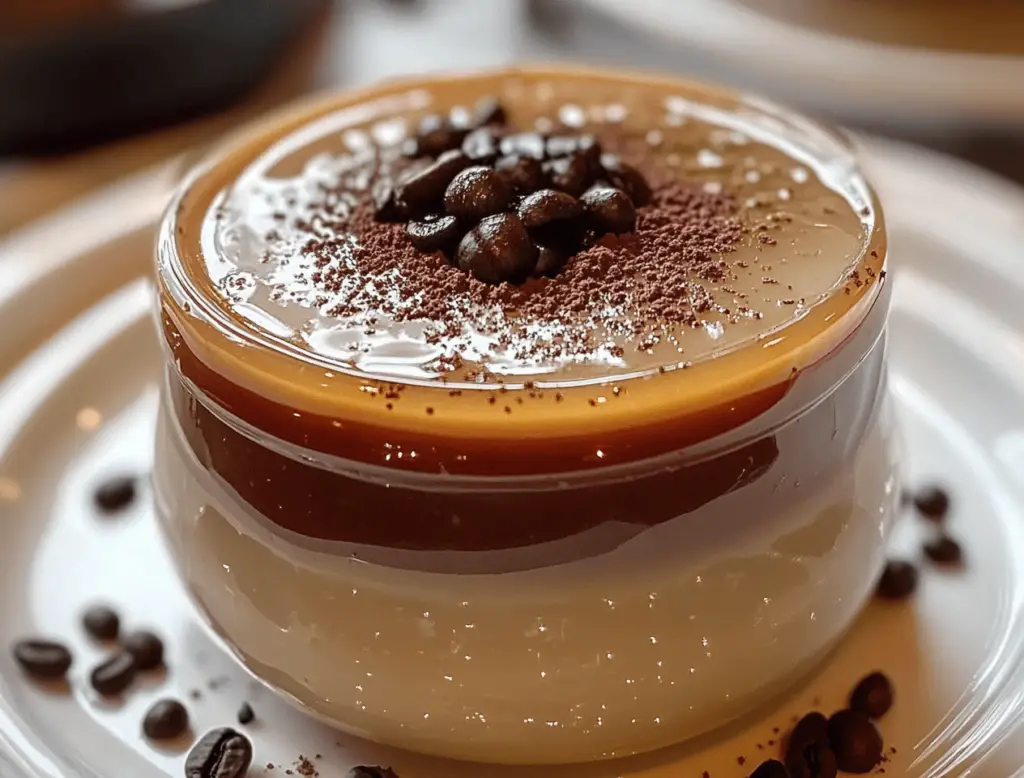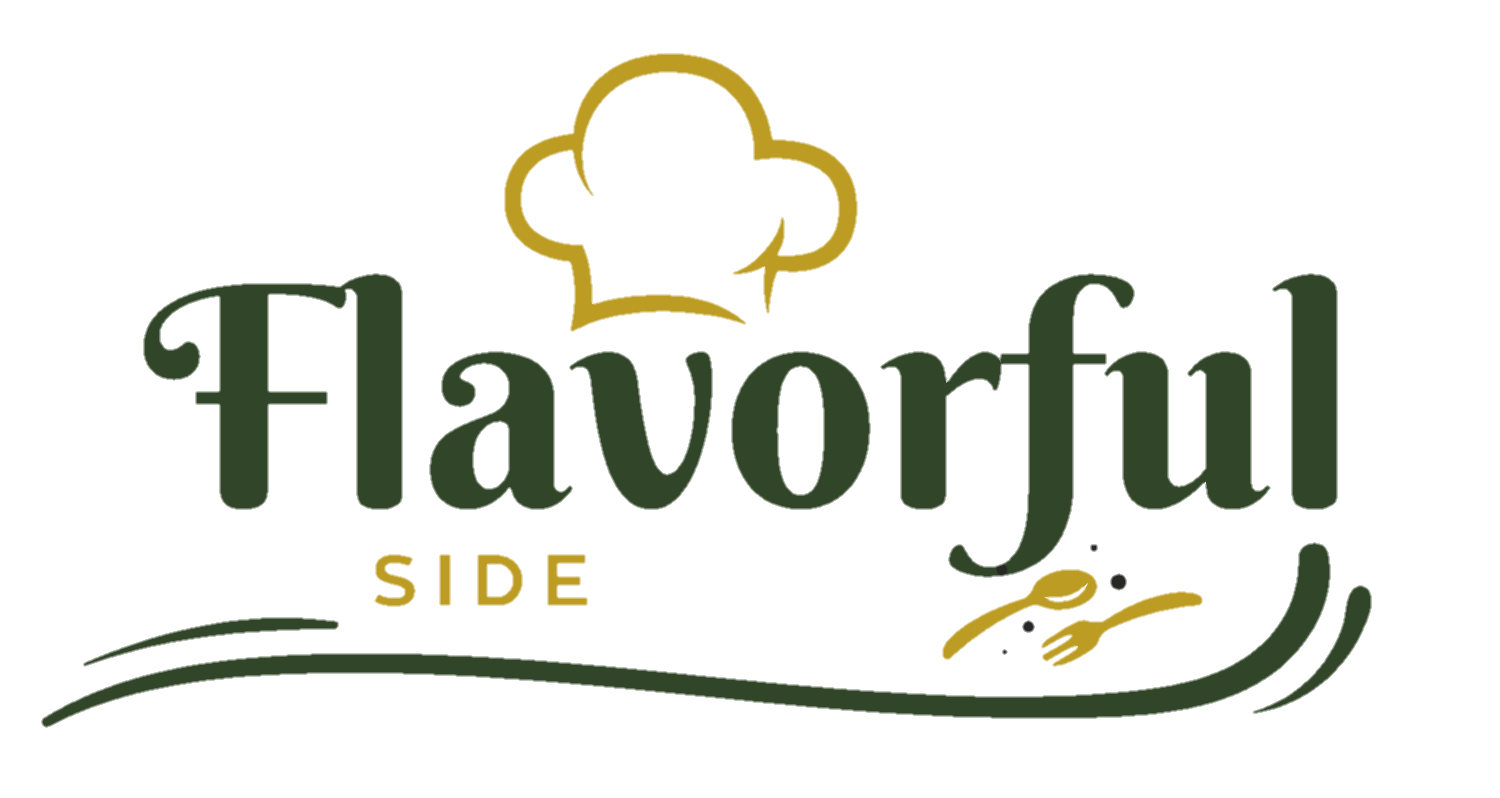Coffee Jelly, a unique and refreshing dessert, has its roots in Japan. Its popularity has spread globally, captivating dessert enthusiasts with its distinct coffee flavor and jiggly texture. In this comprehensive guide, we will explore everything you need to know about making and enjoying Coffee Jelly. From its rich history to the detailed preparation process, you’ll learn how to create this delightful treat in your own kitchen.

Overview of Coffee Jelly
Coffee Jelly is a dessert made from sweetened coffee and gelatin. It can be served on its own or with a variety of toppings such as whipped cream, ice cream, or fruit. This dessert is beloved for its simplicity and the delightful contrast of flavors and textures it offers.
Definition and Basic Ingredients
Coffee Jelly typically consists of a few key ingredients: brewed coffee, sugar, and gelatin. The coffee is sweetened to taste, mixed with gelatin, and then allowed to set in the refrigerator until it reaches a jiggly consistency. This process creates a dessert that is both flavorful and visually appealing.
Brief History and Cultural Significance
Coffee Jelly was first introduced in Japan in the early 20th century. It gained popularity quickly due to its refreshing nature and the increasing popularity of coffee in Japan. Over the decades, it has become a staple in Japanese cuisine, often served in restaurants, cafes, and homes.
Evolution and Adaptation in Various Cultures
As Coffee Jelly spread beyond Japan, it adapted to suit different palates and dietary preferences. In the United States and Europe, it is often served with a variety of toppings, from whipped cream to fresh fruit. This adaptability has helped Coffee Jelly maintain its appeal across different cultures and culinary traditions.
Cultural Significance in Japanese Cuisine
In Japan, Coffee Jelly is more than just a dessert; it is a cultural icon. It represents the fusion of Western and Japanese culinary practices and is a testament to Japan’s innovative approach to food. Coffee Jelly is commonly found in convenience stores, supermarkets, and is a favorite dessert in many households.
Preparation Phase & Tools to Use
Preparation Phase
The preparation phase is crucial for achieving the right consistency and flavor in Coffee Jelly. It involves brewing the coffee, dissolving the gelatin, and carefully combining the ingredients. Patience is key, as the mixture needs time to set properly.
Recipe details
- Prep Time: 10 minutes
- Cook Time: 5 minutes
- Cool Time: 2-3 hours
- Total Time: Approximately 3 hours
- Servings: 4-6 servings
- Yield: One medium-sized dish of Coffee Jelly
Essential Tools and Equipment
- A medium-sized saucepan
- A whisk or spoon for stirring
- Measuring cups and spoons
- A heatproof bowl or mold for setting the jelly
- A refrigerator for cooling
Importance of Each Tool
Each tool plays a vital role in the preparation process:
- Saucepan: For heating and dissolving the gelatin.
- Whisk/Spoon: Ensures the gelatin is fully dissolved and the mixture is well combined.
- Measuring Tools: For precise ingredient measurements.
- Heatproof Bowl/Mold: Shapes the Coffee Jelly and helps it set properly.
- Refrigerator: Essential for cooling and setting the jelly.
Preparation Tips
To achieve the best results:
- Use high-quality coffee for a rich flavor.
- Ensure the gelatin is fully dissolved to avoid lumps.
- Allow the mixture to cool slightly before refrigerating to prevent condensation.
- Use a clear mold for a visually appealing presentation.
Ingredients List
- 2 cups of brewed coffee (strong)
- 1/4 cup of sugar (adjust to taste)
- 2 tablespoons of gelatin powder
- 1/4 cup of cold water
Step-by-Step Instructions
- Brew the Coffee: Start by brewing 2 cups of strong coffee. Use your preferred method, whether it’s a drip coffee maker, French press, or espresso machine.
- Dissolve the Gelatin: In a medium saucepan, mix the gelatin powder with 1/4 cup of cold water. Let it sit for a few minutes to bloom.
- Heat and Combine: Add the brewed coffee and sugar to the saucepan with the gelatin. Heat over medium-low, stirring constantly until the gelatin and sugar are completely dissolved.
- Cool the Mixture: Remove from heat and let it cool slightly.
- Set the Jelly: Pour the mixture into a heatproof bowl or mold. Refrigerate for 2-3 hours or until fully set.
- Serve: Cut into cubes or scoop into serving dishes. Serve on its own or with your favorite toppings such as whipped cream or ice cream.
Side Dish Recommendations
Pairing Coffee Jelly with the right side dishes can enhance the overall dining experience. Here are some excellent options to consider:
Whipped Cream and Berries
Adding a dollop of whipped cream and a handful of fresh berries creates a beautiful contrast with the coffee flavor and provides a rich, creamy texture.
Vanilla Ice Cream
A classic pairing, vanilla ice cream complements the robust flavor of Coffee Jelly, making it a perfect combination for dessert lovers.
Fresh Fruit Salad
A fresh fruit salad can add a refreshing element to Coffee Jelly. Fruits like mango, pineapple, and kiwi work particularly well.
Chocolate Drizzle
A drizzle of chocolate syrup over Coffee Jelly adds a touch of sweetness and enhances the overall flavor profile, making it a more indulgent treat.
Sweet Red Beans
A traditional Japanese pairing, sweet red beans (anko) provide a delightful contrast with the bitter notes of coffee.
Mint Leaves
Adding mint leaves as a garnish can bring a fresh and aromatic twist to Coffee Jelly, making it more refreshing.
Coconut Cream
For a tropical twist, top Coffee Jelly with coconut cream. This adds a layer of richness and enhances the overall flavor.
Honey Syrup
Drizzling honey syrup over Coffee Jelly introduces an extra layer of sweetness and depth, balancing the bitter coffee notes.
Nutritional Information & Health Benefits
Understanding the nutritional content and health benefits of Coffee Jelly can make it even more appealing.
Nutritional Information
Coffee Jelly is a relatively low-calorie dessert, making it a guilt-free treat. Here’s a breakdown of its nutritional content:
- Calories: Approximately 60-80 per serving (without toppings)
- Fat: 0 grams
- Carbohydrates: 15-20 grams
- Protein: 1-2 grams
Health Benefits
Benefits of Coffee
- Antioxidants: Coffee is rich in antioxidants, which help combat free radicals in the body.
- Cognitive Function: Caffeine in coffee can improve focus and cognitive function.
- Metabolism Boost: Coffee can enhance metabolic rate, aiding in weight management.
Benefits of Gelatin
- Joint Health: Gelatin is known to support joint health and reduce inflammation.
- Skin and Hair: Collagen in gelatin promotes healthy skin and hair.
- Digestive Health: Gelatin can aid digestion by improving gut health.
Making a Healthier Version
- Use decaffeinated or low-acid coffee.
- Substitute sugar with natural sweeteners like honey or stevia.
- Use agar-agar instead of gelatin for a vegan option.
Common Mistakes To Avoid & How to Perfect the Recipe
Common Mistakes
Overcooking the Coffee Mixture
Overcooking can lead to a bitter taste and can affect the texture of the jelly. Heat just enough to dissolve the gelatin and sugar.
Using the Wrong Type of Gelatin
Not all gelatin is the same. Use unflavored gelatin specifically meant for desserts to ensure proper setting.
Incorrect Measurements of Ingredients
Precise measurements are crucial. Too much or too little gelatin can affect the texture and consistency of the jelly.
Improper Cooling Techniques
Allow the coffee mixture to cool slightly before refrigerating to prevent condensation, which can create a watery top layer.
How to Perfect the Recipe
Achieving the Perfect Texture
- Bloom the Gelatin: Let the gelatin bloom properly in cold water before adding to the hot coffee.
- Stirring: Stir continuously to ensure even distribution of gelatin and sugar.
Enhancing the Flavor Profile
- Quality Coffee: Use high-quality, freshly brewed coffee for the best flavor.
- Sweetness: Adjust the sugar level to taste, keeping in mind that toppings may add extra sweetness.
Experimenting with Coffee Types and Flavors
- Espresso: For a more intense flavor, use espresso instead of regular coffee.
- Flavored Coffee: Try different coffee flavors like vanilla, hazelnut, or caramel.
Tips, Notes, Storing, and Reheating
To ensure your Coffee Jelly remains delicious and fresh, follow these additional tips and best practices.
Tips and Notes
Additional Tips for Beginners
- Use High-Quality Coffee: The quality of the coffee significantly impacts the flavor of the jelly. Opt for freshly brewed, high-quality coffee.
- Adjust Sweetness: Taste the coffee mixture before adding the gelatin. Adjust the sugar according to your preference.
- Proper Gelatin Blooming: Always bloom the gelatin in cold water before mixing it with the hot coffee. This ensures a smooth texture without lumps.
- Avoid Overheating: Do not let the coffee mixture boil after adding gelatin, as it can degrade the gelatin’s setting properties.
Notes on Variations and Customizations
- Decaffeinated Option: For a caffeine-free version, use decaffeinated coffee.
- Flavored Variations: Experiment with different coffee flavors such as hazelnut, vanilla, or caramel to create unique versions of Coffee Jelly.
- Vegan Alternative: Use agar-agar instead of gelatin for a vegan-friendly option. Adjust the quantity as per the package instructions since agar-agar sets differently than gelatin.
Storing and Reheating
Best Practices for Storing Coffee Jelly
- Refrigeration: Store Coffee Jelly in an airtight container in the refrigerator. It can last up to a week when properly stored.
- Avoid Freezing: Freezing Coffee Jelly is not recommended as it can alter the texture, making it watery and unappetizing upon thawing.
Reheating and Serving
- Reheating: Coffee Jelly does not require reheating. Serve it chilled straight from the refrigerator.
- Serving Suggestions: Serve Coffee Jelly with various toppings such as whipped cream, fresh fruits, or a drizzle of condensed milk to enhance its flavor.
FAQs
How to Make Coffee Jelly Vegan?
To make Coffee Jelly vegan, replace gelatin with agar-agar, a plant-based gelling agent. Follow the package instructions for the correct amount and ensure it dissolves completely in the hot coffee mixture before setting.
Can I Use Decaf Coffee?
Yes, you can use decaffeinated coffee to make Coffee Jelly. It will have the same flavor profile without the caffeine content, making it a perfect dessert for those who prefer to avoid caffeine.
How Long Does Coffee Jelly Last in the Fridge?
When stored in an airtight container, Coffee Jelly can last up to one week in the refrigerator. Ensure it is properly covered to prevent it from absorbing any fridge odors.
Can I Use Flavored Coffee?
Absolutely! Using flavored coffee can add an interesting twist to your Coffee Jelly. Popular choices include vanilla, hazelnut, caramel, or mocha-flavored coffee.
What Can I Use Instead of Gelatin?
Agar-agar is a great substitute for gelatin and is suitable for vegetarians and vegans. It sets firmer than gelatin, so you might need to adjust the amount used according to the package directions.
Is Coffee Jelly Suitable for Children?
Coffee Jelly contains caffeine, so it may not be suitable for young children. However, using decaffeinated coffee can make it a kid-friendly dessert.
How Do I Prevent Coffee Jelly from Becoming Too Bitter?
Ensure that the coffee you use is not overly strong or bitter. Adjust the sugar to balance the bitterness of the coffee. Taste the mixture before setting to get the desired sweetness.
Can I Freeze Coffee Jelly?
Freezing is not recommended as it can change the texture and make it watery. It’s best enjoyed fresh and chilled from the refrigerator.
What Are Some Creative Serving Ideas?
Serve in small, decorative glasses or bowls. Top with whipped cream, a sprinkle of cocoa powder, or shaved chocolate for an elegant presentation. You can also layer it with other flavored jellies for a multi-layered dessert.
How Do I Fix Coffee Jelly That Hasn’t Set Properly?
If your recipe hasn’t set properly, it may be due to insufficient gelatin or not allowing it enough time to set. You can reheat the mixture, add a bit more gelatin (properly bloomed), and then let it set again in the refrigerator.
Conclusion
Coffee Jelly is a delightful and versatile dessert that can be enjoyed by coffee lovers around the world. Its simple ingredients and straightforward preparation make it an accessible treat for both beginners and seasoned cooks. Whether you prefer it on its own or with a variety of toppings, Coffee Jelly offers a unique and enjoyable dessert experience.
By following the tips and detailed instructions provided in this guide, you can master the art of making Coffee Jelly and impress your friends and family with this elegant dessert. Don’t hesitate to experiment with different flavors and presentations to make it your own.
Print
Coffee Jelly
Description
Discover how to make Coffee Jelly, a delightful Japanese dessert that’s perfect for coffee lovers. Learn the recipe, tips, and variations.
Ingredients
Ingredients List
- 2 cups of brewed coffee (strong)
- 1/4 cup of sugar (adjust to taste)
- 2 tablespoons of gelatin powder
- 1/4 cup of cold water
Instructions
Step-by-Step Instructions
- Brew the Coffee: Start by brewing 2 cups of strong coffee. Use your preferred method, whether it’s a drip coffee maker, French press, or espresso machine.
- Dissolve the Gelatin: In a medium saucepan, mix the gelatin powder with 1/4 cup of cold water. Let it sit for a few minutes to bloom.
- Heat and Combine: Add the brewed coffee and sugar to the saucepan with the gelatin. Heat over medium-low, stirring constantly until the gelatin and sugar are completely dissolved.
- Cool the Mixture: Remove from heat and let it cool slightly.
- Set the Jelly: Pour the mixture into a heatproof bowl or mold. Refrigerate for 2-3 hours or until fully set.
- Serve: Cut into cubes or scoop into serving dishes. Serve on its own or with your favorite toppings such as whipped cream or ice cream.
Notes
- Use High-Quality Coffee: The quality of the coffee significantly impacts the flavor of the jelly. Opt for freshly brewed, high-quality coffee.
- Adjust Sweetness: Taste the coffee mixture before adding the gelatin. Adjust the sugar according to your preference.
- Proper Gelatin Blooming: Always bloom the gelatin in cold water before mixing it with the hot coffee. This ensures a smooth texture without lumps.
- Avoid Overheating: Do not let the coffee mixture boil after adding gelatin, as it can degrade the gelatin’s setting properties.


Leave a Comment